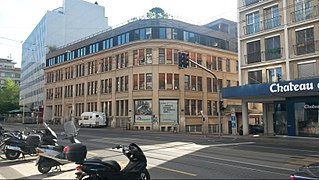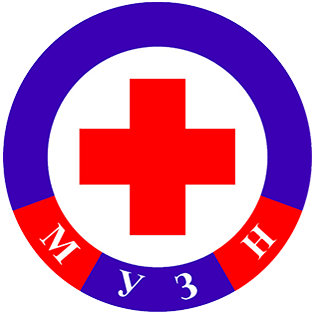Related Research Articles

Médecins Sans Frontières, sometimes rendered in English as Doctors Without Borders, is an international humanitarian medical non-governmental organisation (NGO) of French origin best known for its projects in conflict zones and in countries affected by endemic diseases. In 2019, the group was active in 70 countries with over 35,000 personnel mostly local doctors, nurses and other medical professionals, logistical experts, water and sanitation engineers and administrators. Private donors provide about 90% of the organisation's funding, while corporate donations provide the rest, giving MSF an annual budget of approximately US$1.63 billion.

The Canadian Red Cross Society is a Canadian humanitarian charitable organization, and one of 190 national Red Cross and Red Crescent societies. The organization receives funding from both private donations and from Canadian government departments.

Islamic Relief is an international aid agency that provides humanitarian relief and development programmes in over 40 countries, serving communities in need regardless of race, political affiliation, gender or belief.
The British Red Cross Society is the United Kingdom body of the worldwide neutral and impartial humanitarian network the International Red Cross and Red Crescent Movement. The society was formed in 1870, and is a registered charity with more than 17,200 volunteers and 3,400 staff. At the heart of their work is providing help to people in crisis, both in the UK and overseas. The Red Cross is committed to helping people without discrimination, regardless of their ethnic origin, nationality, political beliefs or religion. Her Majesty The Queen is the patron of the society.
The Cyprus Red Cross Society (CRCS) is the only Red Cross society in Cyprus recognised by the International Red Cross and Red Crescent Movement. The Headquarters of the Society are located in Nicosia.

Turkish Red Crescent is the largest humanitarian organization in Turkey and is part of the International Red Cross and Red Crescent Movement.

Medair is an Evangelical international non-governmental organization NGO of Christian humanitarian aid. Medair provides emergency relief and recovery services including Health and Nutrition; Water, Sanitation, and Hygiene; and Shelter and Infrastructure. Medair lists its values as: hope, compassion, dignity, accountability, integrity, and faith.
The Malaysian Red Crescent Society (MRCS), is a voluntary humanitarian organization that seeks to promote humanitarian values, as well as provide service and public education in disaster management, as well as healthcare in the community. It is part of the International Red Cross and Red Crescent Movement.

The International Federation of Red Cross and Red Crescent Societies (IFRC) is a worldwide humanitarian aid organization that reaches 160 million people each year through its 192 member National Societies. It acts before, during and after disasters and health emergencies to meet the needs and improve the lives of vulnerable people. It does so with impartiality as to nationality, race, gender, religious beliefs, class and political opinions.
Pakistan Red Crescent Society is an organization that provides emergency medical and relief services for Pakistanis. The society was founded in 1947 after Pakistan's independence by an order called The Pakistan Red Cross Order, led by Nurse Saloni Malik. It was later renamed the Red Crescent Society or the Red Crescent Order. Its headquarters are in Islamabad.

The Qatari branch of the Red Crescent Society, the Qatar Red Crescent (QRC), was established in 1978. In 1981, it gained international recognition from the International Committee of the Red Cross in Geneva and joined the International Federation of Red Cross and Red Crescent Societies (IFRC). It is also a member of the Secretariat of Arab Red Crescent Societies in Jeddah. It became the first philanthropic organization in Qatar to establish a women's branch in 1982.

The Mongolian Red Cross Society (MRCS) is the largest humanitarian organization in Mongolia. It was established in 1939 as part of the International Red Cross and Red Crescent Movement and is an auxiliary to the Mongolian Government.
The Armenian Red Cross Society is a non-profit organization, established based on common interests of its members, the only National Society on the territory of Armenia, which does not pursue any religious, political goals, not affiliated with any political stream, and carries out its activities throughout the country. For implementing its authorized goals and objectives, ARCS has established regional, territorial and community branches. The Headquarters is located in Yerevan.
The Swiss Red Cross, or SRC, is the national Red Cross society for Switzerland.
RedR is an international NGO whose stated mission is to “rebuild lives in times of disaster by training, supporting and providing aid workers to relief programmes across the world.” It was originally an acronym for Register of Engineers for Disaster Relief, although it is no longer used as such.
In 1994, the Rwandan genocide unfolded before the world's eyes and with it, several hundred thousand people were murdered in the heart of Africa. At this time, Dr. Dawit Zawde, a medical doctor in Ethiopia, noticed the lack of an African response and organized a medical team to respond out of Kigali. Formally launched in Addis Ababa, within months of its opening, Africa Humanitarian Action (AHA) sent two teams of young health and relief professionals during the Rwandan crisis. These professionals hailed from seven African countries—Benin, Cameroon, Ethiopia, Guinea, Malawi, Rwanda, and Senegal, becoming the first African-only NGO operating in Rwanda. The AHA teams targeted returnee populations and the internally displaced as they were deployed at two health centers, one in the northwest region at Tare in the Kigali Prefecture and a second at Kabarondo in Kibungo Prefecture in the southeast. They provided unprecedented 24-hour emergency health services and regular out and in-patient care. As the operation in Rwanda grew, AHA decided to extend their presence to other countries in Africa. By the end of 1995, AHA had moved to Uganda, Angola and began operations in Ethiopia. By the end of 1999, the framework that was implemented in Eastern and Central Africa by AHA had now been transferred to offices in Western Africa.
The Somali Red Crescent Society (SRCS) is a non-political, independent humanitarian organization in Somalia and is part of the International Red Cross and Red Crescent Movement.
Relief International is a humanitarian non-profit agency that provides emergency relief, economic rehabilitation, development assistance, and programme services to vulnerable communities worldwide. Relief International UK is non-political and non-sectarian in its mission. It is based in Washington, D.C. and in London.
The Maldivian Red Crescent (MRC) is an independent, volunteer, non-profit, humanitarian organization established in the Maldives by virture of the Maldivian Red Crescent Act Law No: 7/2009
References
- ↑ Adela de Allwood, From disaster relief to development, Henry Dunant Institute, 1988, p. 39